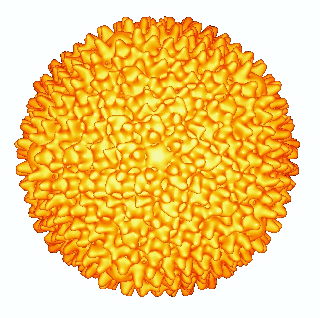Computational Structural Biology

Team
Collaborators
- Prof. Dennis Bamford
(Academy CoE ``Program on Structural Virology'', University of Helsinki)
 PRD1 virus, an isosurface visualization of a model by
Sarah Butcher
PRD1 virus, an isosurface visualization of a model by
Sarah Butcher
Structural biology investigates biological functions and processes through structural studies of large biological molecules and macromolecule complexes. In this project, which is a new direction of research for the FDK unit, we focus on certain inversion and pattern matching problems arising in structural biology. In particular, we study the computer modeling of the structure, assembly, and life cycle of bacterial viruses. The project is a joint activity with prof. Dennis Bamford's laboratory which has very modern equipment for electron microscopy.
We have developed a draft version of a database for storing, managing, searching and comparing three-dimensional models of viruses. Here, search problems such as finding various substructures from the virus models are another application domain for our pattern matching methods. The substructure could be, for example, a protein whose threedimensional shape is known and one wants to find its occurences in the shell of the virus. Both translations and rotations should be allowed in the search which makes it computationally demanding.
We work on computer methods for reconstructing threedimensional structure (density distribution) from electron microscopy data. The problem is a variant of the classical tomography problem of inverting the Radon transform. Our goal is to re-examine the whole computational machinery that is currently used for constructing threedimensional models in electron microscopy. A highly automated procedure seems feasible, but many algorithmic subproblems of independent interest should be solved on the way. The methods will be implemented as a software package.
We also plan to generalize the reconstruction procedure to a novel direction, namely for reconstructing nonrigid objects. Such objects can contain some 'hinges' and hence are flexible.
The reconstructed models themselves offer many computational challenges such as the problem of finding similar substructures in different models. Also, we plan to work on computational models of the assembly of a virus from smaller units a well as to study the relation between the genome organization and the threedimensional structure.